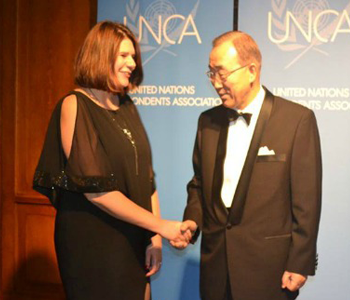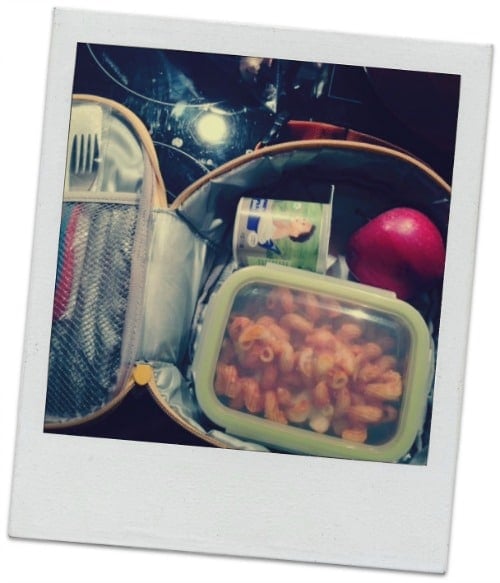
by Maman Aya (USA) | Nov 29, 2013 | Communication, Cooking, Education, Family, Health, Kids, Motherhood, Nutrition, Parenting, School, USA, World Motherhood, Younger Children
 For the last three years I have had to prepare lunch for my son to take to school with him. I always sent him a warm meal, in a thermos, usually comprised of leftovers or something that I would cook for him before school in the morning. I stood in the kitchen lovingly cooking his lunch every day. The only rules the school had were no nuts or candy. OK – easy enough, considering I always include fresh fruit and a salad and since I am conscience to buy organic whenever I can, I knew that he was having a balanced meal that was healthy and included some of the vital nutrients that his growing body needed.
For the last three years I have had to prepare lunch for my son to take to school with him. I always sent him a warm meal, in a thermos, usually comprised of leftovers or something that I would cook for him before school in the morning. I stood in the kitchen lovingly cooking his lunch every day. The only rules the school had were no nuts or candy. OK – easy enough, considering I always include fresh fruit and a salad and since I am conscience to buy organic whenever I can, I knew that he was having a balanced meal that was healthy and included some of the vital nutrients that his growing body needed.
This September, he started first grade, and the school rules changed. I am no longer allowed to pack his lunch, and he HAS to eat from the cafeteria.
The first graders need to learn responsibility and proper nutrition, so part of that lesson is allowing them to choose their food themselves.
I wouldn’t mind if they had the same organic, fruit and vegetable laden options that I would provide, but they don’t. Apparently they get organic “when they can”, and they try to make the parents feel better by saying that there is a “salad bar” available to the kids with baby carrots, tomatoes, cucumbers, hard boiled eggs and such available. They also have a “sandwich bar” where the kids can have their choice of bread like white sliced bread, bagels, whole wheat sliced bread, etc. (my kids have never had white sandwich bread in their life). They have cold cuts (I don’t ever buy cold cuts at home, since they are full of nitrates and sodium, if anything I would get fresh cooked chicken or turkey and slice it for a sandwich), and butter and jam available. They always have some kind of breakfast cereal (non-organic, mind you), and milk, juice, chocolate milk available to drink. Now to be fair, they have a “hot food bar” available as well, where the kids have a selection of hot foods available usually consisting of some protein, starch, vegetable, a soup, perhaps some pizza or pasta. (more…)

Maman Aya is a full-time working mother of 2 beautiful children, a son who is 6 and a daughter who is two. She is raising her children in the high-pressure city of New York within a bilingual and multi-religious home.
Aya was born in Canada to a French mother who then swiftly whisked her away to NYC, where she grew up and spent most of her life. She was raised following Jewish traditions and married an Irish Catholic American who doesn’t speak any other language (which did not go over too well with her mother), but who is learning French through his children. Aya enjoys her job but feels “mommy guilt” while at work. She is lucky to have the flexibility to work from home on Thursdays and recently decided to change her schedule to have “mommy Fridays”, but still feels torn about her time away from her babies. Maman Aya is not a writer by any stretch of the imagination, but has been drawn in by the mothers who write for World Moms Blog. She looks forward to joining the team and trying her hand at writing!
More Posts

by Susie Newday (Israel) | Nov 28, 2013 | 2013, Being Thankful, Family, Israel, Multicultural, Religion, Spirituality, Susie Newday, Traditions, World Moms Blog, World Motherhood
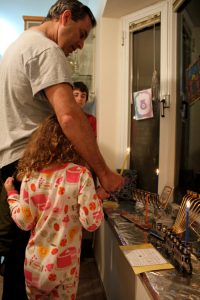 This year, we have a unique occurrence, Thanksgivvukah. (Yes, I know that by now the phrase is probably coming out of your ears.) There are debates as to whether Thanksgivukkah is a once in a 70,000 year event or a once in a decade event. Either way, the last time it happened was 1888 and I doubt any of us will be around for the next one.
This year, we have a unique occurrence, Thanksgivvukah. (Yes, I know that by now the phrase is probably coming out of your ears.) There are debates as to whether Thanksgivukkah is a once in a 70,000 year event or a once in a decade event. Either way, the last time it happened was 1888 and I doubt any of us will be around for the next one.
The Jewish month of Kislev, the month in which Chanukkah occurs, is considered a month of miracles. It’s a month that serves as a reminder to actively do something to banish the darkness from our lives and be a light unto others and the world.
Last night was the first night of the 8 day Jewish holiday of Chanukkah and tonight is the American holiday of Thanksgiving.
I’m grateful for the unique convergence of the two holidays because I think that the message of Chanukah and Thanksgiving is really the same; practice gratitude, practice kindness and be the love you wish to receive. That is the only way to banish the darkness from this world and spread the glow of goodness to the farthest corners of the earth.
So in honor of Thanksgivukkah here are some ideas for making the world a better place.
Embrace the Thanksgiving tradition of practicing gratitude, but go one step further and practice it daily. Be grateful for all the gifts in your life be they big or small.
Embrace the Chanukkah tradition of spreading your light, your inner light, far and wide. I think that the best way to combine gratitude and being a light unto the world is to get into the habit of doing acts of kindness.
So here are ideas for 8 acts of kindness for 8 days of Chanukah, or for that matter, any day of the year.
Smile at everyone you pass
A smile costs you absolutely nothing and you never know what a potentially big impact a single smile can have on someone else’s day.
Write a letter to someone who has made a difference in your life
People don’t always realize the impact they have had on someone. Why not let them know?
Give someone a big hug
People need physical contact and hugs make (most) people feel good.
Forgive someone
This is actually kindness that benefits you the most because forgiving is really for the forgiver.
Ask if you can help
Some people don’t know how to ask for help or don’t think there is anyone who can help them. It can be as simple as asking a parent with a screaming child in a grocery store if they need help or lending your expertise to someone who can benefit from it.
Offer to babysit for someone
Every parent knows that as much as we love our kids, sometimes we need some time apart. Give the gift of sanity to another parent.
Leave a note in a library book
A little note of kindness and encouragement left inside a library book can make all the difference to a struggling parent. Take a look at this amazing note my sister found tucked into the pages of a parenting book.
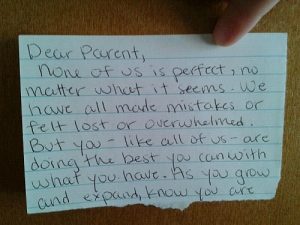
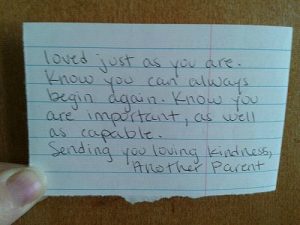
Listen, truly listen
Each and every one of us can learn how to listen better. Listen without thinking about what you are going to reply. Listen with an open mind and most importantly, an open heart. As Buddha said: “A thousand candles can be lit from the flame of one candle, and the life of the candle will not be shortened. Happiness can be spread without diminishing that of yourself.”
So Happy Chanukkah and Thanksgiving to everyone. This holiday season go out and be the light and light the way. Be the person whose act of kindness or love inspires other people to pay it forward and spread kindness and love. One person DOES have an impact, it all starts with the will to make a change.
What is your favorite act of kindness?
This is an original post by World Moms Blog Africa & Middle East Regional Editor, Susie Newday in Israel.
Photo credit to the author. (And to her sister.)
And just for fun, here is a Thanksgivukkah spoof. (If you don’t understand some of the words, they are probably in Hebrew. Just ask me in the comments and I will translate them if you want.)
Susie Newday is a happily-married American-born Israeli mother of five. She is an oncology nurse, blogger and avid amateur photographer.
Most importantly, Susie is a happily married mother of five amazing kids from age 8-24 and soon to be a mother in law. (Which also makes her a chef, maid, tutor, chauffeur, launderer...) Susie's blog, New Day, New Lesson, is her attempt to help others and herself view the lessons life hands all of us in a positive light. She will also be the first to admit that blogging is great free therapy as well. Susie's hope for the world? Increasing kindness, tolerance and love.
You can also follow her Facebook page New Day, New Lesson where she posts her unique photos with quotes as well as gift ideas.
More Posts - Website
Follow Me:






by Mamma Simona (South Africa) | Nov 27, 2013 | 2013, Africa, Family, Home, Kids, Life Balance, Motherhood, Older Children, Parenting, South Africa, Stress, Womanhood, World Motherhood
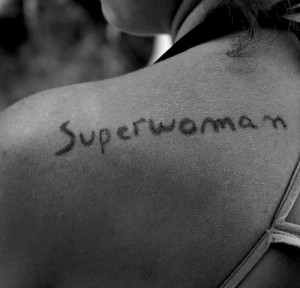 Several years ago I was diagnosed with Fibromyalgia. It’s a common disorder affecting about 5% of all women and is characterized by widespread pain and many other symptoms.
Several years ago I was diagnosed with Fibromyalgia. It’s a common disorder affecting about 5% of all women and is characterized by widespread pain and many other symptoms.
Fibromyalgia is not a psychiatric disorder, even though a particular kind of anti-depressant or anti-seizure medication is sometimes helpful in controlling the nerve pain.
In my case, on a “good” day I feel the same body “achiness” and fatigue normally associated with the flu. On a “bad” day any movement brings tears to my eyes.
The reason I mentioned my Fibromyalgia is just to illustrate a point – as moms we tend to put everybody else’s well-being ahead of our own. My daily pain and fatigue is my new “normal” so for the most part I don’t even mention it. Despite my daily pain, I hold down a full-time job, do chores, do charity work and study online. Do I think I’m “special” for doing all that? Absolutely not!
Yet I still feel guilty because my husband cooks most night. I also rely on my teenage daughter to do a lot around the house and on my son to clean up the yard. I constantly feel that I’m not doing a good enough job of taking care of my house and my family. I want to be a better wife, mother and employee but I’m physically unable to do more than what I already do.
My husband and children are very loving and supportive. They don’t have a problem with helping out. I’m the one who feels like a failure when I can’t do everything I think I should be doing.
Even knowing that I’m doing the best I can, my inner critic doesn’t seem to cut me any slack. My best is simply not good enough. There, I’ve said it. I don’t think I’m a good enough wife and mother and that’s all I care about. What’s funny is that I know (in my head) that I can’t be all bad. I know I must be doing something right because I have a great relationship with my husband and I’ve helped to raise two really amazing young people.
Recently I started feeling worse than usual but I just chalked it up to my Fibromyalgia and kept on going. I finally went to see my doctor when the bad days weren’t letting up.
It turned out that I was feeling so awful not because of my Fibromyalgia (although that surely didn’t help) but because I had a bacterial infection that had spread from my sinuses to my chest. I was diagnosed with sinusitis, laryngitis and a chest infection – all of which required antibiotics and bed rest. I didn’t even know it was possible to have all three at the same time.
Obviously my doctor booked me off work. I stayed home but of course I felt guilty about not going to the office. I know I’m far from unique in this regard. No matter how “good” we moms try to be, we always feel that we’re somehow dropping the ball.
Why is that? Why is it that we are able to be so supportive of each other and so compassionate towards others, but we’re so harsh with ourselves?
I know that I need to learn a new way of living. I need to find a way to stop feeling guilty about things that are outside my control.
If you were hoping for some answers from this post, I’m sorry to disappoint you. I don’t have any answers, just a lot of questions.
How do you change more than 40 years of conditioning so that your children learn a different way of being through your example? How do you learn to accept your limitations with grace and gratitude? How do you start being as kind to yourself as you are to others?
This is an original post for World Moms Blog by Mamma Simona from Cape Town, South Africa. She shares her home with a husband, 2 kids, 2 cats and 2 dogs.
Photo Credit To: Hans Van Den Berg : Flickr Creative Commons
This photo has a creative commons attribution license.
Mamma Simona was born in Rome (Italy) but has lived in Cape Town (South Africa) since she was 8 years old. She studied French at school but says she’s forgotten most of it! She speaks Italian, English and Afrikaans. Even though Italian is the first language she learned, she considers English her "home" language as it's the language she's most comfortable in. She is happily married and the proud mother of 2 terrific teenagers! She also shares her home with 2 cats and 2 dogs ... all rescues.
Mamma Simona has worked in such diverse fields as Childcare, Tourism, Library Services, Optometry, Sales and Admin! (With stints of SAHM in-between). She’s really looking forward to the day she can give up her current Admin job and devote herself entirely to blogging and (eventually) being a full-time grandmother!
More Posts - Website
Follow Me:


by Elizabeth Atalay | Nov 26, 2013 | 2013, Africa, AIDS, Health, ONE, World Events, World Moms Blog
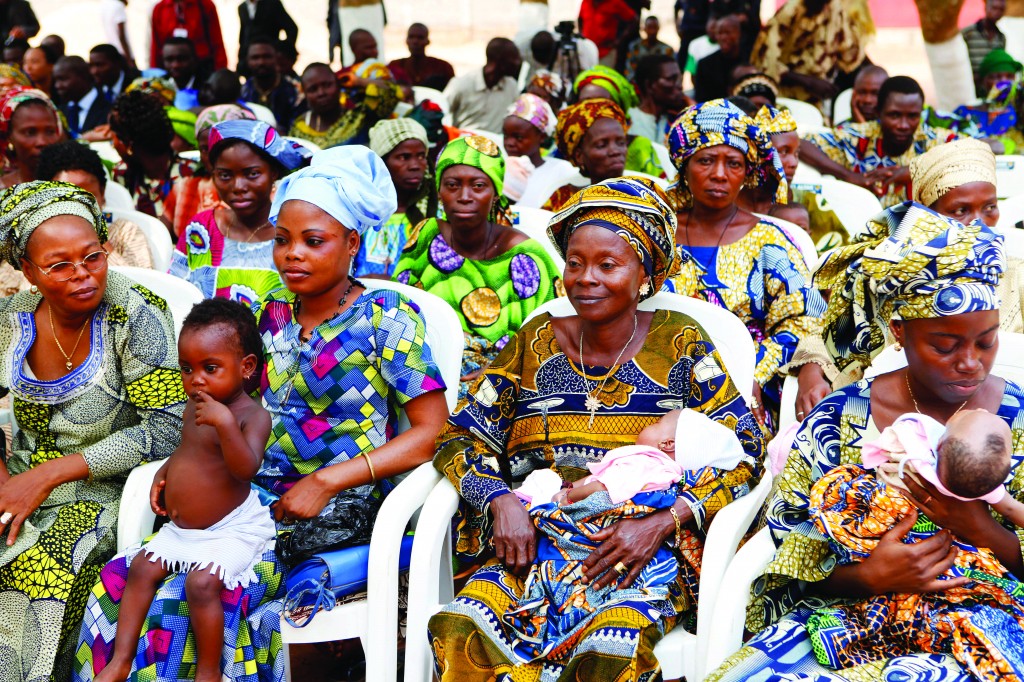
A community meeting of HIV-positive women who have benefitted from prevention of mother-to-child transmission (PMTCT) services and health counselors in Dangbo, Benin. Through the expanding availability of these services, it is now possible to imagine a generation of children being born free from HIV.- photo credit The Global Fund
Optimistic news was released today in the annual accountability report on AIDS by ONE. The highlight is that the sweeping statement “AIDS in Africa” has now become obsolete. African countries are shown in this new report to have made such widely varied progress in the fight against AIDS that the generalization of the continent as a whole no longer makes sense. At this point there are 16 countries in Sub-Saharan Africa that have reached the tipping point of being at the beginning of the end of AIDS. At the same time, other countries are still far behind in the struggle against the disease.
On the 25th World AIDS Day marked on December 1st of 2013, ONE’s new report on the global AIDS fight shows we are closing in on the tipping point.
According to ONE’s 2013 analysis: If current rates of acceleration continue, we could achieve the beginning of the end of AIDS – when the number of people newly added to treatment surpasses the number newly infected with HIV by 2015
Ironically, the AIDS fight has lost some political momentum because of its many successes. Because it is no longer perceived as a global health emergency, but rather a chronic and manageable disease, the fight has lost some of its political momentum. Along with the financial commitment, political leadership at the national and local levels has proved to be essential in driving real gains across the continent.
The three key targets outlined in the report where world leaders should focus significant attention in order to make headway against the disease are:
- The virtual elimination of mother-to-child transmission of HIV by 2015
- Access to treatment for 15 million HIV-positive individuals by 2015
- The drastic reduction of new adult and adolescent HIV infections, to approximately 1.1 million or fewer annually, by 2015.
The data in the assessment breaks down the progress of nine African countries and where they stand in meeting the 2015 goals:
leading the Way: Ghana, Malawi and Zambia are great examples of how international donors, national governments and key civil society leaders can work together to achieve accelerated progress in the fight against AIDS. Zambia and Malawi entered the decade with two of the world’s most widespread, crippling AIDS epidemics. Today, they – along with Ghana – are the world’s leaders in ending the epidemic, having made swift and steady progress over the last few years. All three countries have committed significant national resources for health, have reached and surpassed the tipping point at the country level, and are making even further headway towards the control and defeat of the disease.
ones to Watch: South Africa, Tanzania and Uganda have shown real dynamism but erratic progress as they face massive disease burdens, shifting political landscapes and unique, country-specific challenges. These countries have made significant strides in recent years, but their progress has been slower than in the leading countries. South Africa and Tanzania hit the tipping point for the beginning of the end of AIDS for the first time just last year, and Uganda – with an AIDS ratio of 1.1 – is close to the tipping point but has yet to reach it. Given unsteady progress against the AIDS epidemic in recent years, how these countries move forward in the next 1–2 years will be crucial.
Urgent Progress needed: Cameroon, Nigeria and Togo have not made enough progress, having often been hampered by a lack of political will or competing political priorities, insufficient financial commitments, inefficient delivery systems and a lack of specific attention to prevention. Togo, in particular, had reached the AIDS tipping point in 2010 but has slipped back since. Meanwhile, progress towards the beginning of the end of AIDS has been largely stagnant in Nigeria and Cameroon, albeit with dramatic year-to-year fluctuations in the AIDS ratio. These countries, and others like them, must show a serious acceleration of efforts to achieve the beginning of the end of AIDS by 2015.
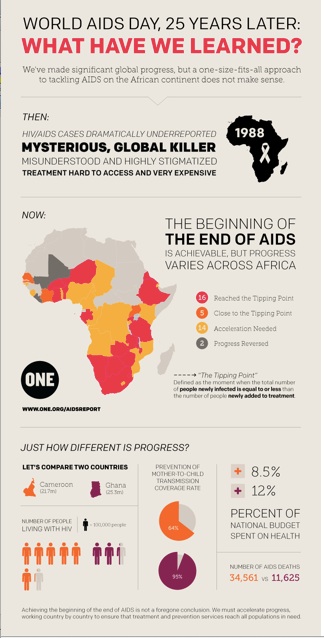
Despite the overall positive progress made in the fight against AIDS the momentum needs to continue to win. Prevention of new infections is key, transparency in reporting, political involvement, targeted resources, and keeping the AIDS issue in the forefront of the global agenda are all critical to the success of this campaign.
This is a big week for the AIDS community, with a hugely successful (RED) auction this past Saturday night, the 25thWorld AIDS Day, and the Global Fund replenishment. The (RED) auction on Saturday raised $13 million which was matched by Bill and Melinda Gates for a total $26 million for the Global Fund. Let’s keep the momentum going!
To learn more you can read the full report
here.
About ONE
Co-founded by Bono, ONE is a campaigning and advocacy organization of more than three million people taking action to end extreme poverty and preventable disease… because the facts show extreme poverty has already been cut in half and can be virtually eradicated by 2030.
ONE does not ask for your money, but for your voice.
Find out more at ONE.org
This is an original World Moms Blog post written by Elizabeth Atalay of www.documama.org. All information comes from The Beginning of The End? Tracking Global Commitments On AIDS Volume 2 ONE Data Report.
- A community meeting of HIV-positive women who have benefitted from prevention of mother-to-child transmission (PMTCT) services and health counselors in Dangbo, Benin. Through the expanding availability of these services, it is now possible to imagine a generation of children being born free from HIV.- photo courtesy of ONE.org

Elizabeth Atalay is a Digital Media Producer, Managing Editor at World Moms Network, and a Social Media Manager. She was a 2015 United Nations Foundation Social Good Fellow, and traveled to Ethiopia as an International Reporting Project New Media Fellow to report on newborn health in 2014. On her personal blog, Documama.org, she uses digital media as a new medium for her background as a documentarian. After having worked on Feature Films and Television series for FOX, NBC, MGM, Columbia Pictures, Warner Brothers, 20th Century Fox, and Castle Rock Pictures, she studied documentary filmmaking and anthropology earning a Masters degree in Media Studies from The New School in New York. Since becoming a Digital Media Producer she has worked on social media campaigns for non-profits such as Save The Children, WaterAid, ONE.org, UNICEF, United Nations Foundation, Edesia, World Pulse, American Heart Association, and The Gates Foundation. Her writing has also been featured on ONE.org, Johnson & Johnson’s BabyCenter.com, EnoughProject.org, GaviAlliance.org, and Worldmomsnetwork.com. Elizabeth has traveled to 70 countries around the world, most recently to Haiti with Artisan Business Network to visit artisans in partnership with Macy’s Heart of Haiti line, which provides sustainable income to Haitian artisans. Elizabeth lives in New England with her husband and four children.
More Posts

by World Moms Blog | Nov 25, 2013 | 2013, Body Image, Child Care, Childhood, Communication, Cultural Differences, Education, Eye on Culture, Family, Guest Post, Kids, Language, Life Balance, Motherhood, Parenting, Preschool, Relationships, School, Sex, Sexuality, Traditions, Uncategorized, Women's Rights, World Events, World Interviews, World Mom Feature, World Moms Blog, World Motherhood, Younger Children
 My neighbours in the Netherlands just had a baby and have proudly decorated their window with pink balloons and a garland saying: ”Hooray, a girl!”
My neighbours in the Netherlands just had a baby and have proudly decorated their window with pink balloons and a garland saying: ”Hooray, a girl!”
This would probably be shocking to a new category of Swedish parents, who refuse to reveal the sex of their baby to family and friends as well as to daycare staff. The baby is given a gender-neutral name, and will be dressed in anything but pink and light-blue.
Why? The parents don’t want their child to be subjected to society’s division of human beings into male and female, claiming that the stereotypes linked to it limit the child’s freedom.
While this remains rather rare, there is a rapidly increasing number of preschools in Sweden where gender equality is the main ideological and educational basis.
In these schools, the staff strives to treat girls and boys equally in all respects. They don’t hide the fact that both sexes exist, but don’t make a point of it and won’t encourage the children to play and behave in a way that is typical for their sex. They won’t call them girls and boys, but refer to them as ”friends” or ”children”.
Conveniently enough, a new pronoun is making its way into the Swedish language: ”hen”, meaning both ”he” and ”she” (”han” and ”hon” in Swedish). When the practice of using ”he” for both sexes in law texts was changed to the more cumbersome ”he or she”, texts became difficult to read and people started looking for other solutions.
The idea of ”hen” comes from the Finnish language (although Finnish is completely different from Swedish; its closest relative among European languages is Hungarian), which uses the pronoun ”hän” for both sexes. Apart from being used in texts to increase readability, the Swedish pronoun ”hen” is now used by advocates of gender neutrality.
The new pronoun and gender-neutral preschools are hot topics in Sweden right now. An increasing number of people like and make use of them, but a big part of the population is very critical towards them.
Sweden is one of the leading countries when it comes to gender equality. Thanks to the important work that has been done in this regard, women and men now basically have the same opportunities in all areas of life.
When gender equality turns into gender neutrality, however, are we still going in the right direction? Isn’t there a risk that gender-neutral treatment introduces another type of prejudice? When girls behave in a traditionally girly way, and boys behave in a traditionally boyish manner, will this be happily accepted or will they feel that their behaviour is wrong? Will there be a new ideal of tough girls and soft boys, as some critics fear?
How will children develop when their parents actively try to conceal what sex they are? Will they think that it’s bad to be a boy or a girl? Will they revolt against their upbringing and shower their own daughters with princess stuff, and their sons with cars and toy guns? Or will these children simply be freer and more unprejudiced than those who grow up in more traditional families, and contribute to a positive change in society?
Time will show.
What are you thoughts on this modern, Swedish approach to gender equality?
Kristina was born in Hamburg, Germany, but moved to Sweden at the age of 8 (her mother is German, her father Swedish). She studied French and linguistics and works as a translator. At the moment she lives in the Netherlands with her French husband and their two daughters, aged 17 months and 4 years. Kristina is interested in psychology and right now particularly focuses on child and family psychology. Working three days a week and being a full-time mom the remaining days, she doesn’t find as much time to read, write and practice yoga and music as she would like, but appreciates her early mornings in trains. There is nothing like contemplating an awakening landscape from a train with a cup of hot chocolate.
The image used in this post is credited to Jonathan Stonehouse. It holds a Flickr Creative Commons attribution license.
World Moms Blog is an award winning website which writes from over 30 countries on the topics of motherhood, culture, human rights and social good. Over 70 international contributors share their stories from around the globe, bonded by the common thread of motherhood and wanting a better world for their children.
World Moms Blog was listed by Forbes Woman as one of the "Best 100 Websites for Women 2012 & 2013" and also called a "must read" by the NY Times Motherlode in 2013. Our Senior Editor in India, Purnima Ramakrishnan, was awarded the BlogHer International Activist Award in 2013.
More Posts

 For the last three years I have had to prepare lunch for my son to take to school with him. I always sent him a warm meal, in a thermos, usually comprised of leftovers or something that I would cook for him before school in the morning. I stood in the kitchen lovingly cooking his lunch every day. The only rules the school had were no nuts or candy. OK – easy enough, considering I always include fresh fruit and a salad and since I am conscience to buy organic whenever I can, I knew that he was having a balanced meal that was healthy and included some of the vital nutrients that his growing body needed.
For the last three years I have had to prepare lunch for my son to take to school with him. I always sent him a warm meal, in a thermos, usually comprised of leftovers or something that I would cook for him before school in the morning. I stood in the kitchen lovingly cooking his lunch every day. The only rules the school had were no nuts or candy. OK – easy enough, considering I always include fresh fruit and a salad and since I am conscience to buy organic whenever I can, I knew that he was having a balanced meal that was healthy and included some of the vital nutrients that his growing body needed.
















